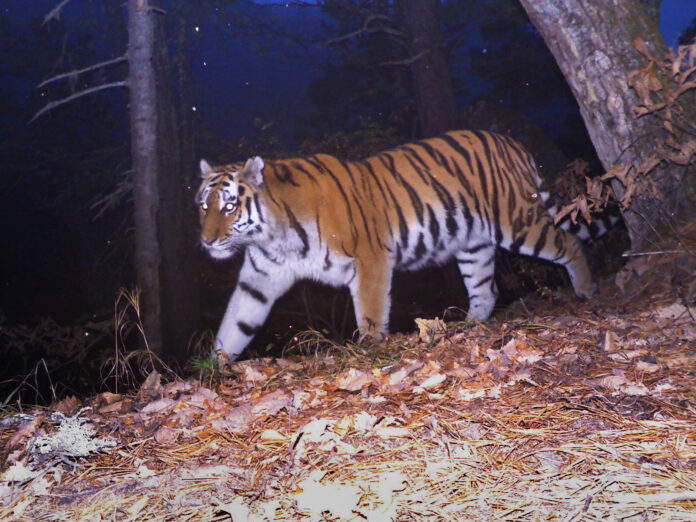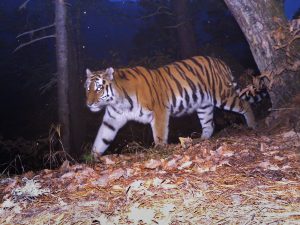
BY HARRY WEEKES

I just finished re-reading “Tiger,” John Vallaint’s gripping nonfiction telling of a vengeful Amur tiger that stalks a village in Russia’s Far East. Of the many things the book does well, two stand out: Vallaint’s description of what it is like to inhabit the same physical space as a 500-pound cat where you are definitely an item on the menu, and the corollary, what it is like to share the same mental space as a major predator.
Vallaint introduced me to two German terms—the Umvelt and the Umgebung. The Umvelt is each animal’s subjective view of the world, with the Umgebung being the objective world in which the animal exists. To illustrate the point, he uses the simple example of a woman walking down the street with her dog, with the street environment they both occupy being the Umgebung, and how the woman and the dog “see” things differently the various Umvelten—the woman might focus on a person she knows while the dog is intent on the smell from a nearby restaurant.
In the part of the world Vallaint highlights in “Tiger,” many people, out of a necessity born of survival, come very close to sharing and even fusing their Umvelt with animals. In other words, in this Russian Boreal jungle, humans and nonhuman animals start having the same subjective view of the world. Naturally, this got me thinking about miniature Dachshunds.
I have had dogs my entire life and while I have always wondered what a dog sees, it wasn’t until this book that I really wanted to attune to my dogs and ask, “What are they seeing?” So far, I am totally stumped.
In my in-laws’ yard in Connecticut, there is definitely some kind of intermittent and unusual nocturnal visitor. Perhaps twice a summer, the dogs go out and almost immediately get really slow. They walk around tentatively and purposefully, like a person with a metal detector, noses moving intently over the ground, until they come to a spot, which they investigate intensely… and then leave alone. No digging, no marking of their own, just a kind of concerned look. What’s up with that?
Other animals elicit the exact opposite response; I open the door and the dogs immediately charge into the night, barking like mad, a ridge of hair raised on each of their backs… then they stop. They sniff the air and then vigorously kick dirt out behind them. As they stand down and come back wagging, I play the part of freaked-out human looking into the dark.
Then, there’s just watching Oscar’s nose, which I got to do as I crossed country with him in a dog carrier. His nose never stopped moving, subtly adjusting to a thousand smells that left me wondering: What is his experience of JFK? Of Salt Lake City? Of returning to Idaho after chasing after opossums in Connecticut?
In Russia’s Far East, humans and dogs share an Umvelt because their survival depends on it. They exist in a true partnership, one honed by thousands of years of living off of the forest, and by living in a forest where things live off of you. From this comes an interspecies empathy as magical as it is abstract in our modern world.
As I blunderingly try and fuse the subjective soap bubbles of my dogs and my Umvelten, I can at least take comfort and joy in sharing our Umgebung.
Harry Weekes is the founder and head of school at The Sage School in Hailey. This is his 47th year in the Wood River Valley, where he lives with his wife Hilary and their three kids—Georgia, Penelope and Simon—a nice little flock.


